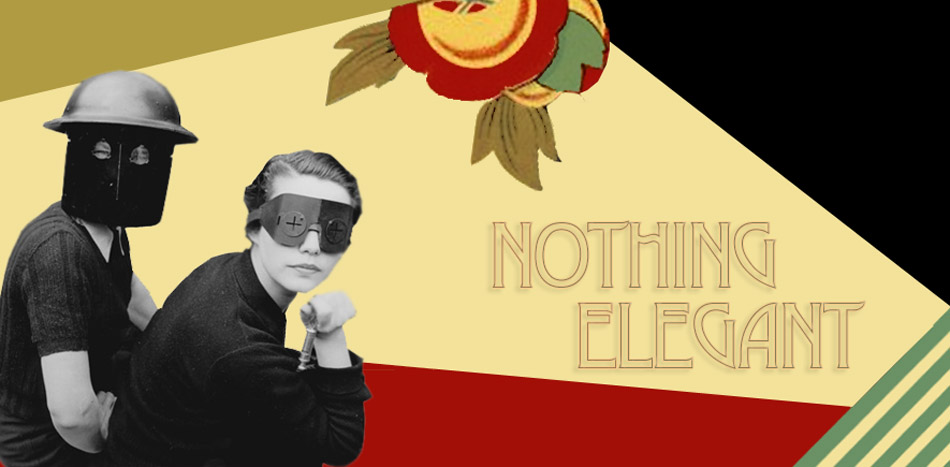Sorry I've been a bit "absent" over the past few days -- both literally and figuratively! But, I wanted to end this stressful work week with a post and some photos inspired by all of the exciting buzz on NYC fashion week. I just found out my sister will be going to some of the shows tonight and I am JEALOUS! [If you are reading this Lindsay, I am holding up my fist in the air and shaking it angrily as I sit at my desk studying on a Friday night!] I wonder who she will run into?? I have to be honest, I've lost interest in current models for the most part [I just care about the clothes nowadays], but I am fascinated by the history of runway shows and "mannequin parades," as they were called up through the 1950's.

The stern, but elegant lady pictured above is Lady Duff Gordon [or Lucile, as she called herself], and she is widely known as the inventor of the fashion show. She trained the first professional models (the mannequins) beginning in 1897, as well as staging the first runway, or "catwalk," style shows.


French designer Jean Patou was also an innovator of the fashion show. He marketed his clothing to wealthy American women in the 20's and 30's and would often recruit American models for his Paris fashion shows. Isn't he dapper?

And of course, the incomparable Coco Chanel, whose designs were integral to the creation of the image of the Flapper in the 1920's, helped to standardize the look and walk of models during the period. [Chanel is pictured seated above with her mannequins and wearing her famous black jersey suit].
Models were always somewhat controversial ; though the level of undress during the early 20th century fashion shows was nothing compared to those of today, many people were shocked by their appearance.
According to fashion historian Caroline Evans, "The very uniformity of 1920s fashions was disturbing to some critics, and the New Woman's appearance increasingly troubled moralists in the 1920s precisely because, masked in heavy make-up, with shingled hair and "flapper" mannerisms, the wife of the respectable industrialist could no longer be distinguished from the working girl.
Like the fake jewelry that Chanel popularized in the 1920s, the fashion show strung the mannequins together like false pearls: too lustrous, too uniform, and too perfect for plausibility, they incarnated the treacherous and uncanny instability of appearances."
Here are some more photos of early mannequin parades:
Here are some more photos of early mannequin parades:
Have a lovely weekend everyone...and don't forget to strut your stuff a little...who needs a runway!? Teehee.




















9 comments:
*laughs*
I actually strutted my stuff earlier today - I blame my red ringmaster's jacket, which makes it impossible to walk in an inconspicuous manner.
It's great to read a blog with some history in it, nice job! More and more people seem to be interested in fashion history, though - I, for one, can't wait for that movie about Coco Chanel. Just wished it would be released here in Norway at the same time as in USA, but I'll probably have to wait several months (as usual).
This post reminds me of Miss Pettigrew Lives for a Day. Have you seen it? It was pretty enjoyable.
Oh, I love Jean Patou illustrations so much!
Have a nice weekend you too! :)
I remember reading about the parties that Paul Poiret threw instead of having shows. He would dress up his models in the monkey furs and frou frou and make them pretend they were the equivalent of socialites except it was clear they were not... It's strange, but I can't even begin to imagine how things must have been in that time..
ALSO: I never got back to you on sunglasses and perfume (I, too, have been going to a show here and there ;)) I think the main difference is with that perfume it is more likely that you actually are bringing something to the market that isn't already there. While it is obviously the money maker, you can actually have good, "unique" perfume that people will want to buy without damaging your philosophy.
Sunglasses are a bit trickier, as it's really hard to make sunglasses that aren't complete shit. Margiela I think brought something new and interesting (okay, ALMOST, Thierry Mugler did it back in the day, but whatever) to the table with his L'Incognitos, but his more recent sunglasses (and accessory line as a whole, for that matter) have been terrible. In fact, since Diesel bought that company, they've been expanding in less than savory manner. We talked about how or whether we were able to judge integrity.
I think the best example for me is Ann Demeuelemeester. It helps that I have friends that have met her and say she is truly THE example of everything I would like in a brand... Either way, reading just a few older interviews of her makes you understand how she believes in doing things at a natural pace and being humble yet strong at the same time.
great images here!
another terrific post!
happy weekend, tara ; )
Happy to see Coco.. and i love the photos you have included. nice bit of history as well:)
Thanks for the great photos and intersting history of catwalk :)
"mannequin parades"?!?!?!?! i love it! that's exactly what they should be called!
Post a Comment